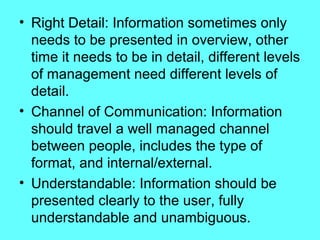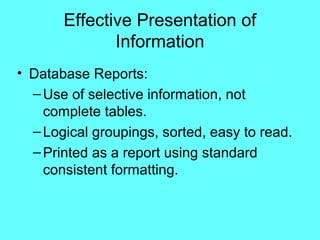This document discusses objectives and concepts related to information, data, and effective presentation. It covers classifying and characteristics of information, data capture and accuracy, and the needs and uses of information for management and decision making. Key points include how information can be classified by source, nature, level, time, etc. and the importance of relevant, accurate, and timely information for planning and decision making. It also addresses translating data prior to entry, ensuring data quality, and audit mechanisms for data capture.






























